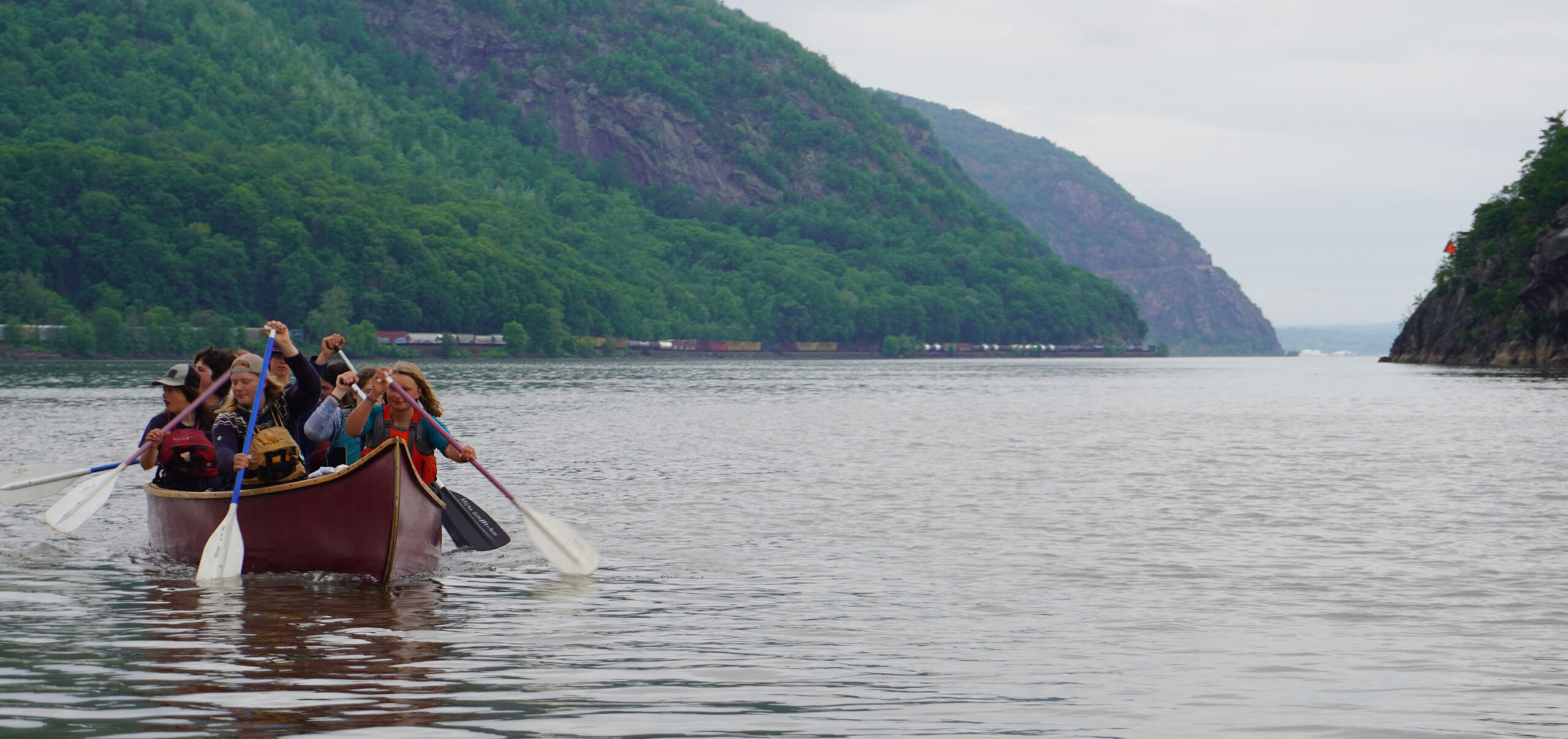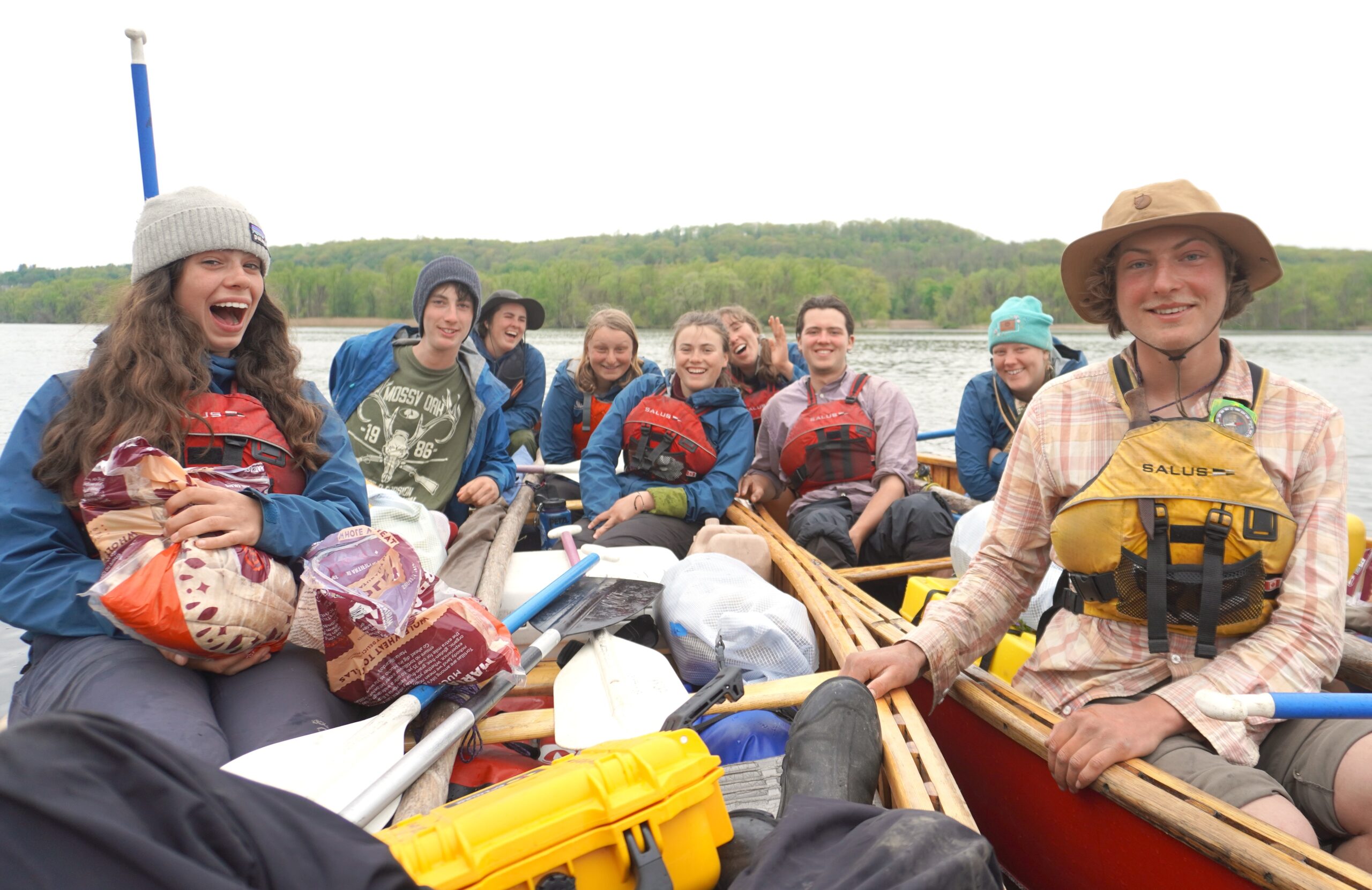2025 Full Circle Blog #7
On a hot and sunny day we rowed into Whitehall, NY right above the northernmost lock of the Champlain Canal. Nathan was waiting there for us, and we docked our boats and unloaded them at a marina next to an old coal storage building. That night we stayed in a small public park on the waterfront. The town of Whitehall is full of beautiful old storefronts and houses but without many people to take care of them. Many buildings are deserted and many of the people we met there said that the town is slowly dying. We spent the following day going through our gear and getting read for the next adventure. Rebecca and Hope drove our van while we took the train 20 miles south along the canal to put in at Lock 7 of the Champlain Canal.
LOCKS
The Champlain Canal was built in 1823 to connect Lake Champlain to the Hudson River. Many sections of the northern Hudson River are not navigable, and the canal served as a reliable waterway to carry goods down to the city. They also built locks to allow boats to bypass waterfalls and navigate the difference in elevation of the different bodies of water. There are a total of 11 locks on the Champlain Canal, and we passed through seven of them on our way downstream. This required special permission and help from the NY State Canal Company because during the month of May they normally are not officially open yet for the season.
From the front a lock looks like a big gate in the canal. Each time as we approached, the gates would swing open for us, revealing a large rectangular concrete chamber with another gate at the other end. After we are safely inside, the gates shut and the water drains out to match the level of the canal downstream below us.
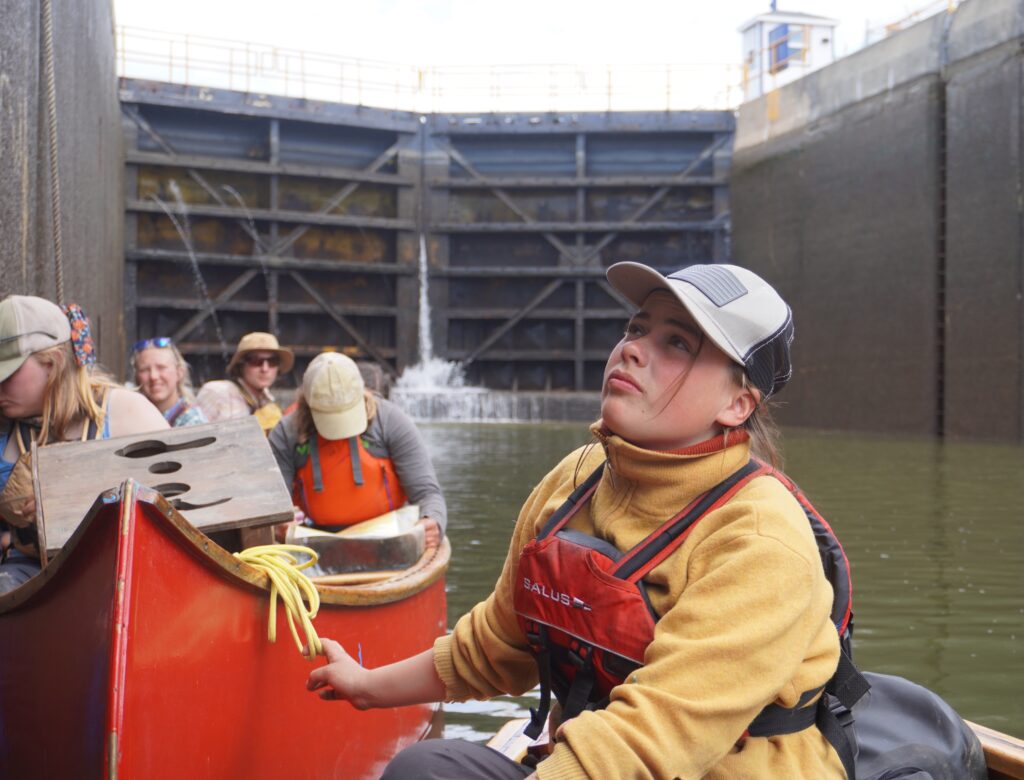
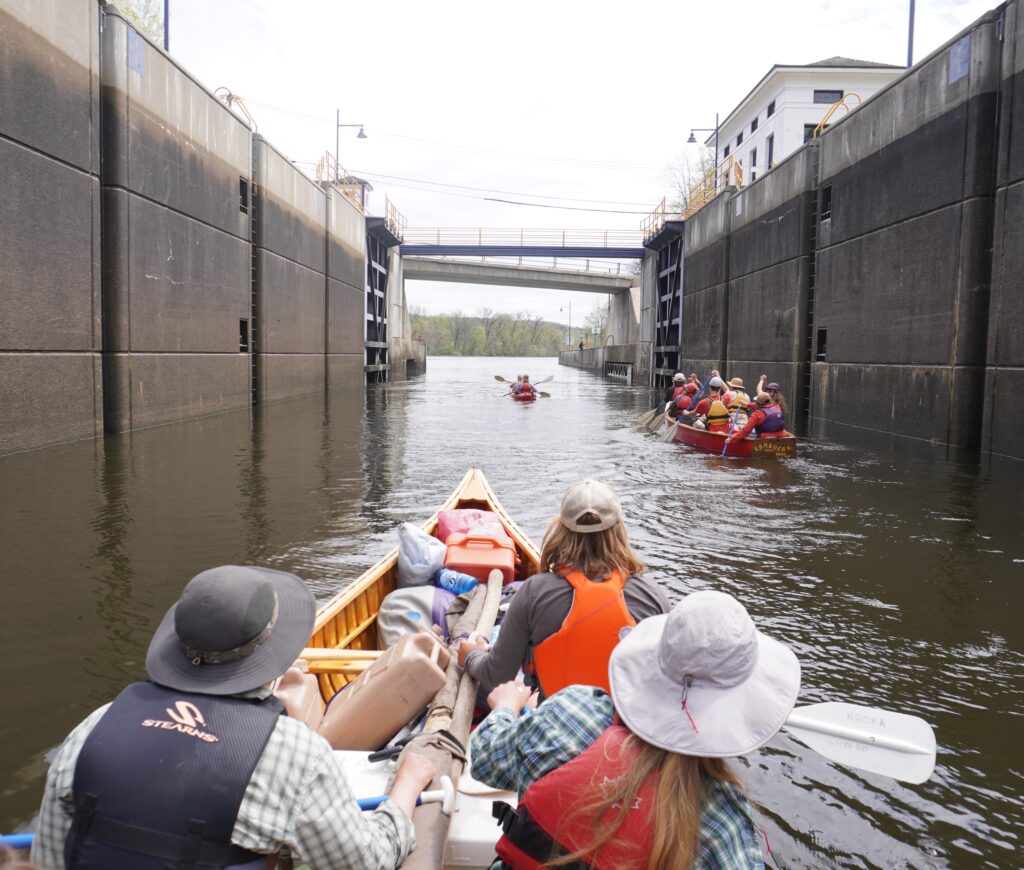
SUNDAY, MAY 5
As we paddled down through the locks and then into the Hudson River itself, the landscape began to change. No more secluded forest hills, but instead we wound through small neighborhoods and then larger cities. We began to meet more people fishing and boating. After passing through Waterford, Troy, and Albany, NY in a light drizzling rain we spend the night at “Staats Island”, hosted by the Staats family in their historic 1690 brick house.
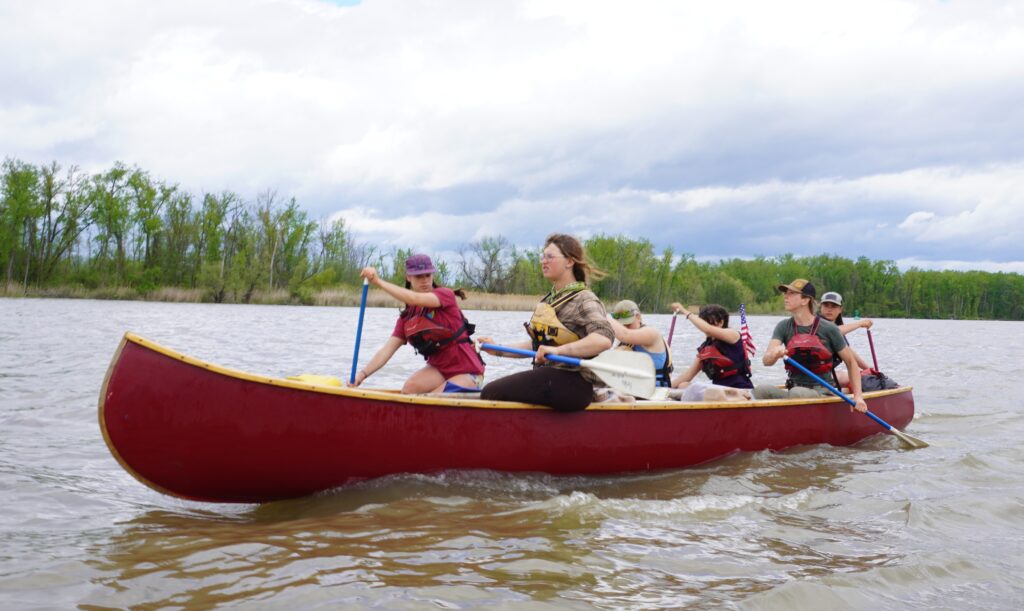
The next day we planned a big push to reach the city of Hudson, NY. The weather continued to be dark and murky, and raindrops fell around us as we paddled. Fishing boats shared the river with us – mostly men and boys seated with fishing poles against the railing – as a result of annual hatch of herring and subsequent feeding frenzy of larger striped bass and sturgeon.
Our more social Kroka students enjoyed interrogating the passing fishing boats with questions shouted across the water. A popular survey question involved asking each boat, “What is your favorite breakfast?” The answers were frequently entertaining, combining eggs and bacon with beer, cigarettes, coffee, bourbon and cigars.
Later in the day it began to pour. Rain streamed down our faces and hair while we belted out song after song to keep us going. Late in the afternoon, as we faced the final, dismal push towards camp, out of the downpour a motorboat came speeding towards us full of people. Alexa’s family and friends had come to find us through the storm! We landed together on a riverside beach where they pulled out ten quarts of ice cream and handed us large spoons to eat with. Now sticky ice cream mixed with rain covered our bodies and we began to shiver – from the cold or excitement or sugar overdose!
Alexa’s family motorboat clan took some of our heavier gear in their motorboat so that we could make it to Hudson more quickly, and we were energized and fueled with sugar to paddle for the final hour in the rain.
In the city of Hudson on the east side is a small cove, reached only by ducking under a small railroad bridge. The cove is surrounded by a collection of dilapidated fishing shacks, and the water was murky and trash littered the beach. We pulled up to shore – gingerly stepping through the mud to unload our boats. We emerged through the gloom and pouring rain, to hear the laughter of friendly voices coming from across the street, where Alexa’s friends and family were cooking us a meal of hot beef stew while we carried our canoes up the shoreline. As soon as everything was stowed away, we passed through the gate into the Kite’s Nest community garden and took in the sight of eclectic garden beds, an outdoor kitchen, and small tent pavilion. We setup our tents, changed out of our wet clothes, and got to enjoy a lovely meal together with songs and stories – a great ending to a long day!
KITE’S NEST GARDEN – HUDSON, NY
The garden is run by a non-profit organization that works to connect young people with the earth. They run an after-school program for elementary age students and hire local high school students to work in the garden, giving everyone an opportunity to get their hands in the soil. We spent time with both the younger students and the older teens, who were all enthusiastic about our journey and full of questions. The sun came out just in time for a fun afternoon with games and helping one another out.
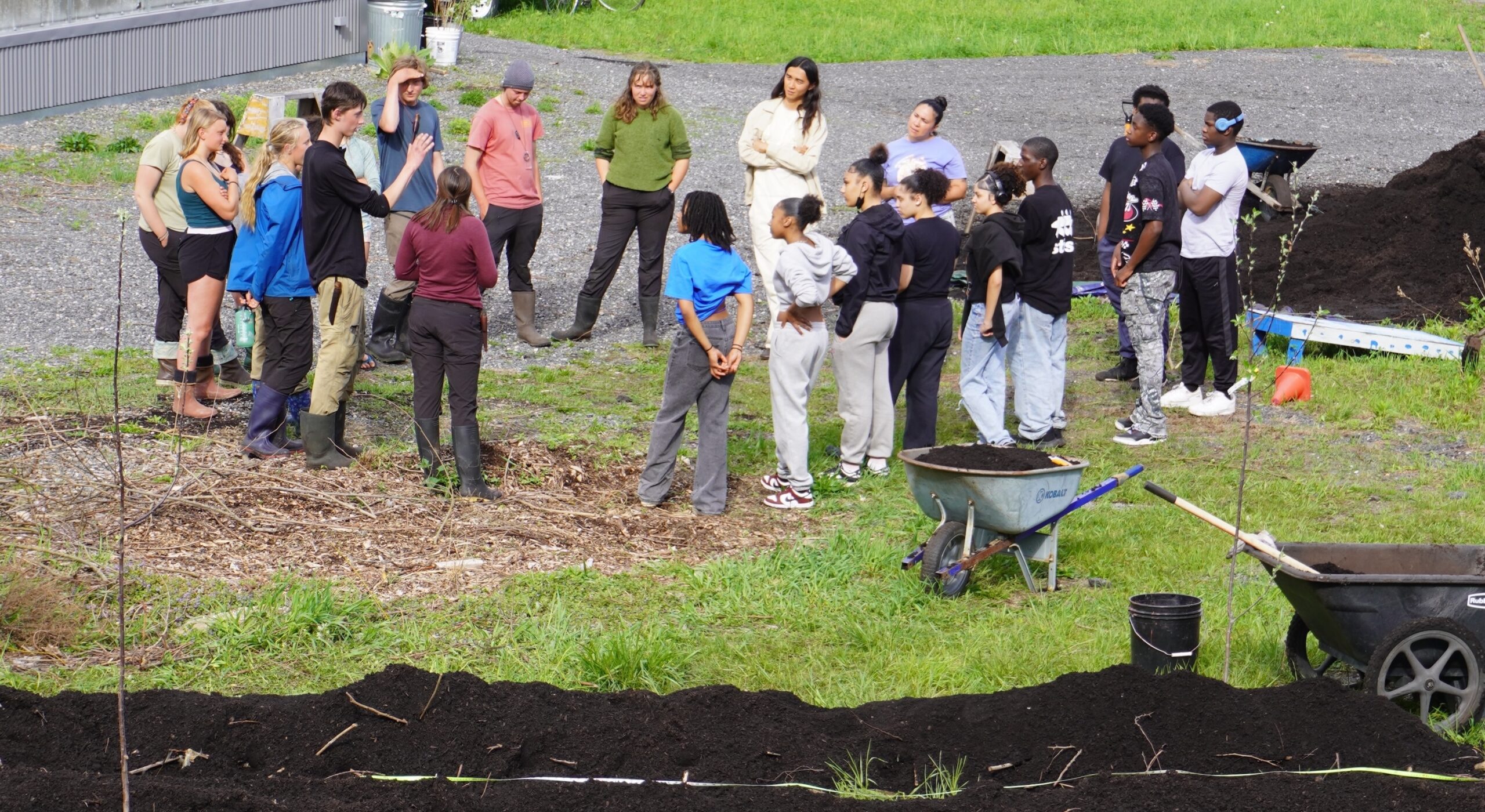
Working together at the Kite’s Nest
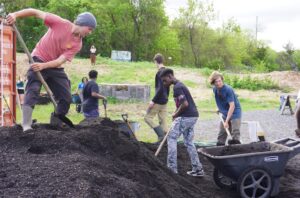
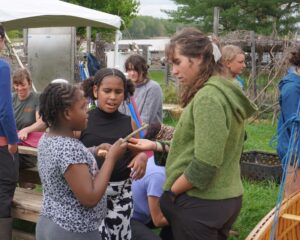
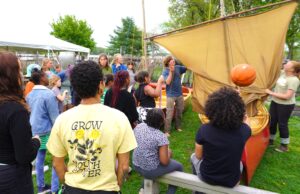
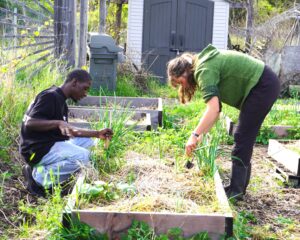
WEDNESDAY, MAY 8
The fog was so thick on the water in the early morning that we could not see across the river when we set off from our campsite at an old brick yard in the town of West Camp, NY. Spirits were high with a short and exciting day ahead of us. Soon the sun began to burn off the fog as we continued south, revealing the many windowed mansions that dominated the eastern side of the river. On the west side were small hamlets and state parks, as well as the picturesque Saugerties Lighthouse, which sits on a point jutting out into the channel – reachable only by boat or footpath across a causeway. We ate our second breakfast there at the lighthouse, overlooking the river, and met several curious visitors who interviewed us about our expedition. Then we were invited to go on a tour inside the historic lighthouse, where the lighthouse-keeper Patrick takes care of a small museum and operates a bed-and-breakfast. The lighthouse is automated now, but for a long time lightkeepers and their families lived in the building tending the lamps.
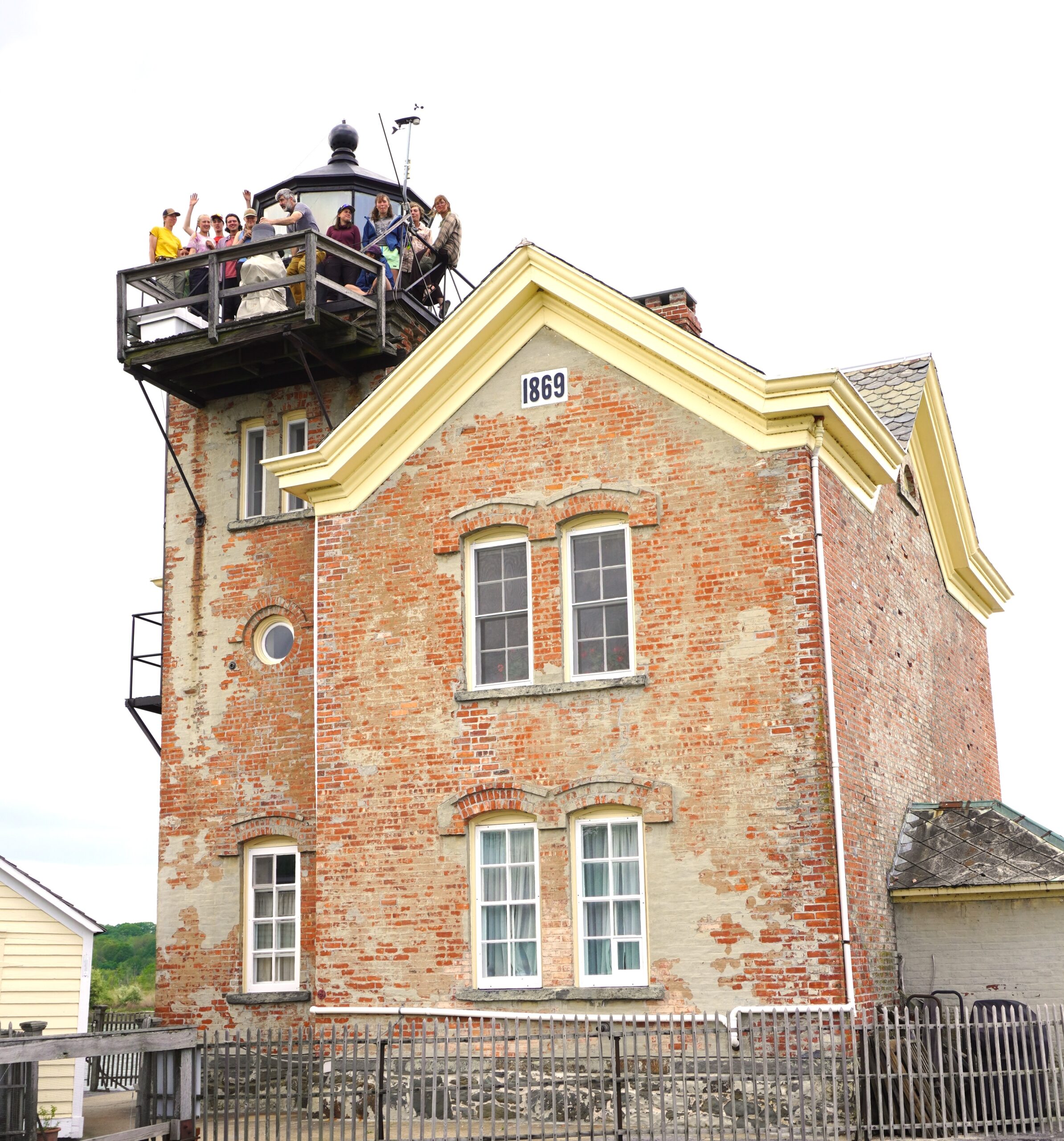
Saugerties Lighthouse
The wind picked up suddenly as we left the Saugerties lighthouse, blowing the water into whitecaps. We paddled hard, hoping to make it to our destination before the next storm blew in. Again, we had to go under the railway tracks to get into a large bay on the east side of the river. After crossing the bay, we landed on a steep forested muddy hillside. We carried our gear up the hill and stored it near the waterfront before hiking up a small road to the campus of Bard College where we had arranged to be hosted the Dean of Social Action, Dr. Paul Marienthal. As we reached his house, the downpour began, soaking us and our gear thoroughly. We were warmly welcomed out of the rain by Paul, who invited us to bathe at his house while cooking us an amazing dinner. Several of his students came to the house to meet with us, and it was really exciting to talk with so many other young people about our journey and the world today.
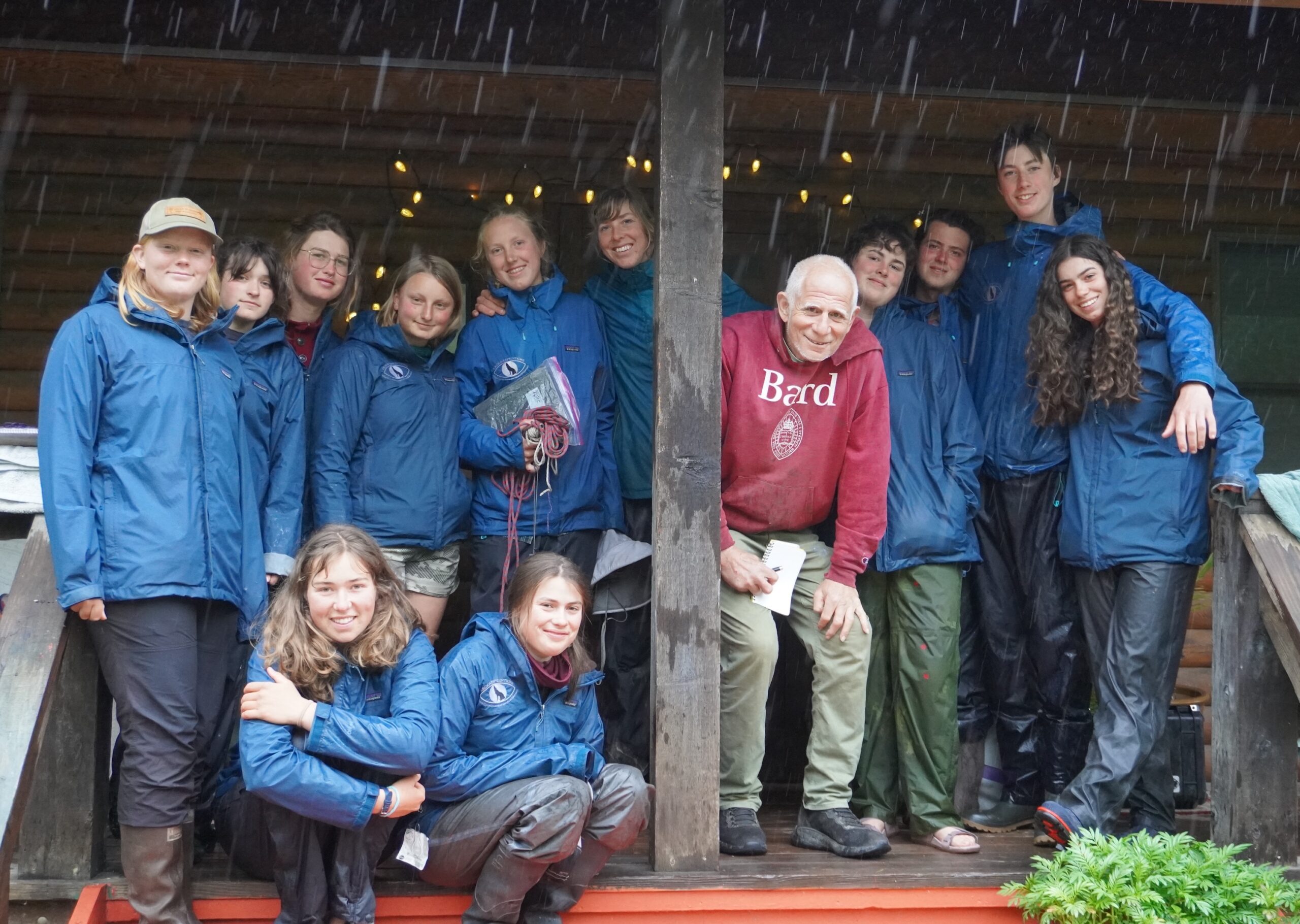
Dr. Paul Marienthal, Bard College Dean for Social Action
TUESDAY, MAY 9
We woke up at Bard College to continued heavy rain, so we took a walk around the campus and stopped at the student dining hall where we seemed to be the only people without electronic devices and headphones. We may have attracted some attention due to our boisterous energy, body odors, and twelve bottomless appetites.
Soon, though, we had to leave the cozy campus and enter into the cold wet world. We were sad that it as so rainy, otherwise we would have been able to explore Bard College a little more.
We bid farewell to Paul and after much heavy and muddy work, climbed back into our swamped boats. Because it had rained so much, the river was swollen and flooded. From across the bay, it looked as though we would not be able to make it under the railroad tracks back to the Hudson River, and we prepared ourselves for the likely possibility of turning back around to seek shelter again.
As we approached however, we saw that there was just barely enough space to make it. We weighed down the bow of each boat so that it would not hit the bridge, and negotiated the swift current under the bridge – pushing hard several times to get the right angle. All of us had to lie down in the boat as it pushed under the low bridge. Some people enjoyed the challenge while others were frightened. While under the bridge, the bow barely scraped the metal – had the water been even one inch higher we would never have made it. Cheers and screams of joy broke from our mouths as we floated out the other side: wet but triumphant. After passing that test we had another three hours of paddling through the rain before getting a warm dry welcome from the Hudson River Maritime Museum in Kingston, NY, where we were welcomed into their wooden boat school to dry off with hot tea, cookies, and pizza! The next day we enjoyed the Kingston Earth Fair and visiting with fellow mariners on the schooner Apollonia and the famous Hudson River Sloop Clearwater.
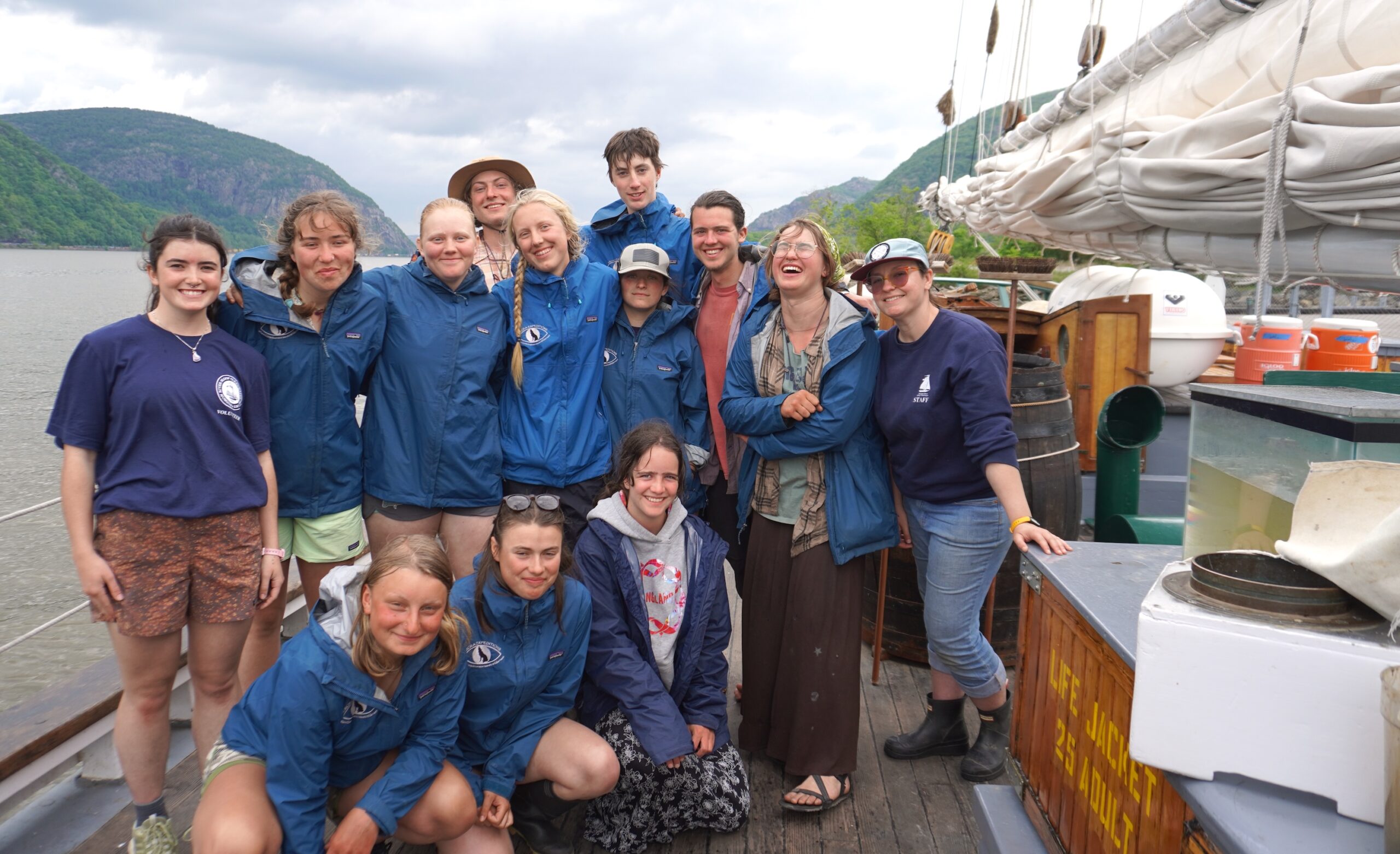
On Board the Clearwater
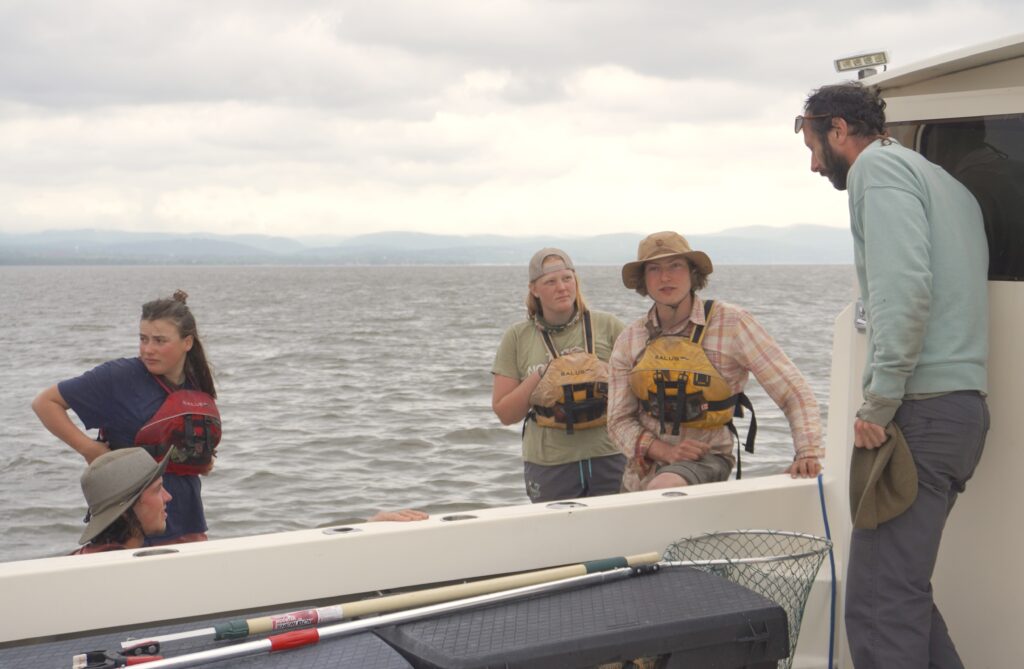
Meeting our friends the Riverkeepers
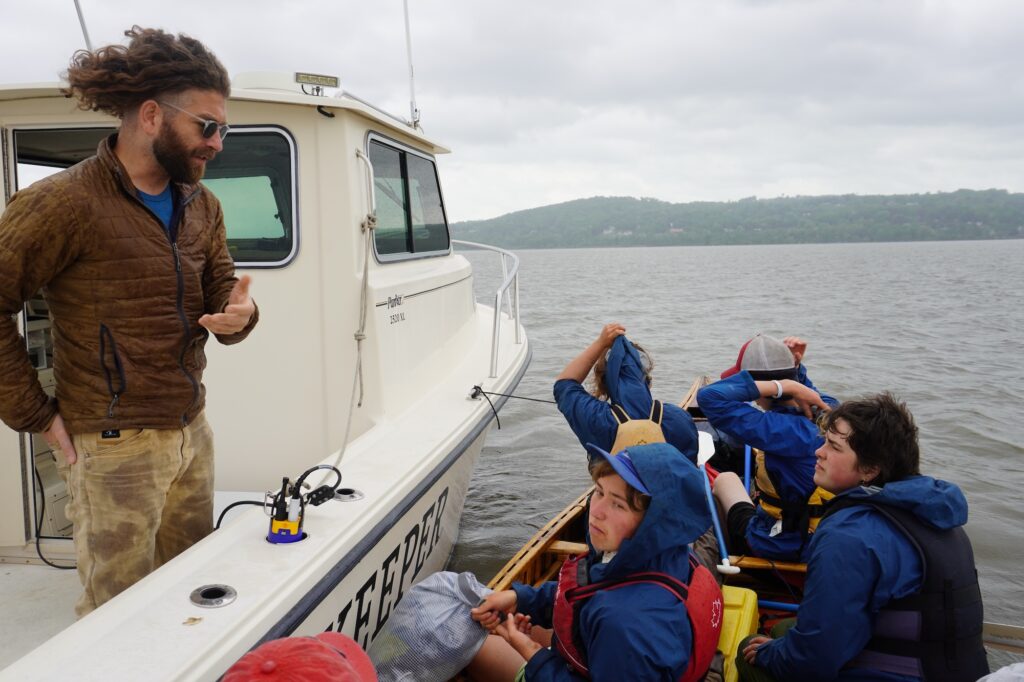
HITCHIKERS
Our assistant Kroka instructor Hope sadly had to leave our group five days into this leg of the expedition, making us a group of only 12 students plus Nathan. We really wanted more people to paddle with us so that we could make good time on the river – so we searched around for someone strong, not squeamish, entertaining, and ready to laugh at our stupid jokes.
Our first visitor was Maggie Smith, fresh from Ithaca, NY. She is a good paddler, down-to-earth, lanky, draft-horse farmer. She immediately became a member of our group, so much that she was interviewed by passers-by multiple times about how the past five months had changed her life, and she would have to reply with a laugh that she had only been with us for 48 hours.
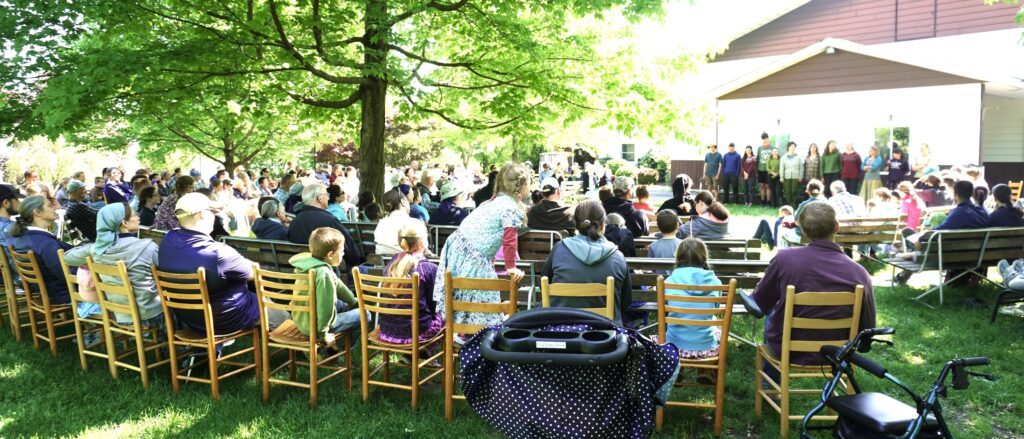
Singing for our friends at the Maple Ridge Bruderhof Community
Our next visitor was Riona, from the Maple Ridge Bruderhof community in Esopus, NY. An adventurous young woman from East Sussex, England, she was full of laughter and wisdom. We were so happy to have another student with us for a few days until we sadly said goodbye to her in the town of Cold Spring.
Finally, Emily Shames rode a train all the way down from Boston to join us. Emily is a very senior experienced Outward Bound instructor who was interested in learning more about the Kroka semester programs. We found her to be brave, resourceful, and full of stories – especially about current events and celebrities. “Did you hear that Katie Perry went into outer space?” She stayed with us for a week, and helped immensely with food in Dobbs Ferry and train logistics for getting in and out of Manhattan.
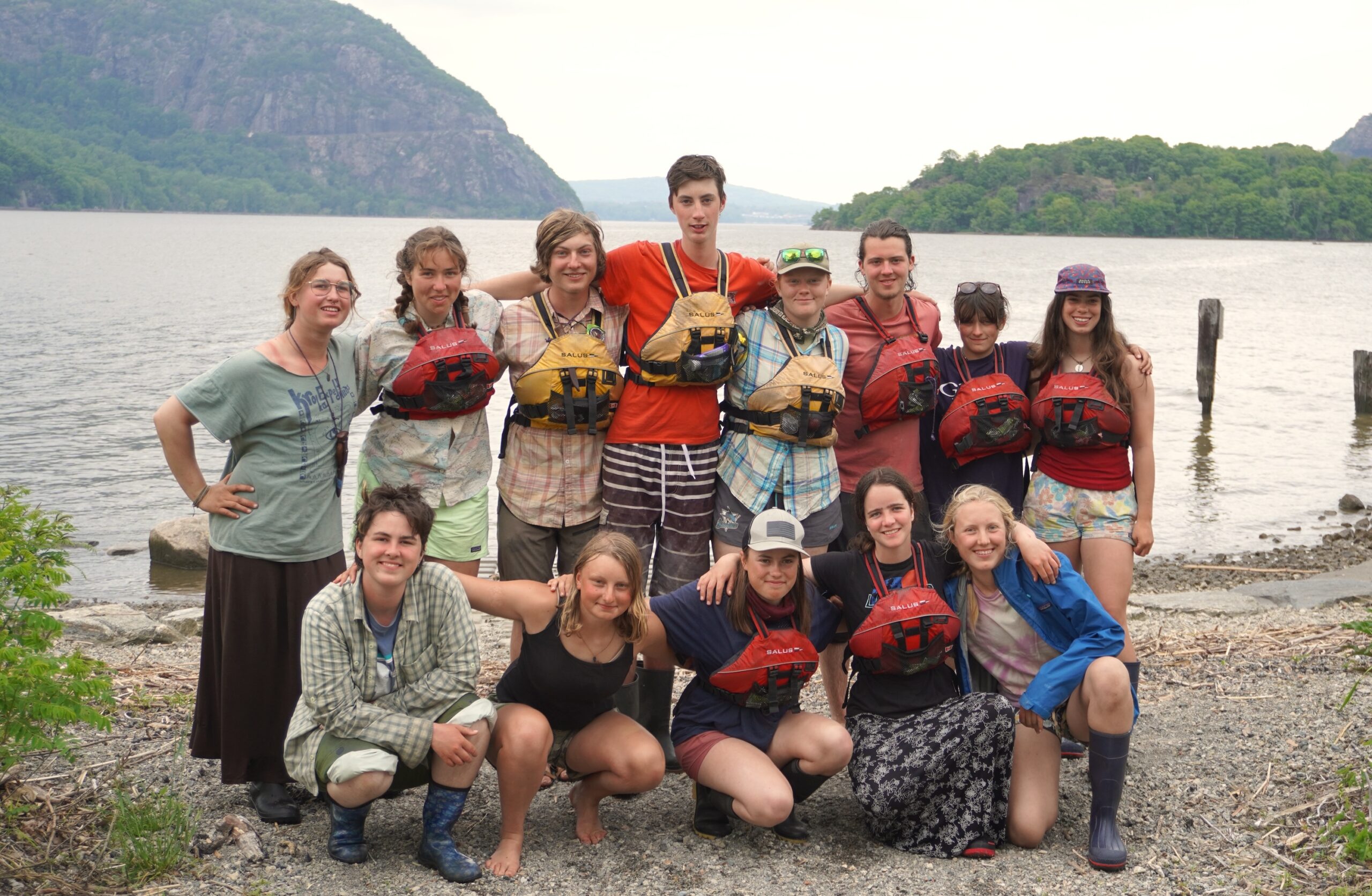
The group at Cold Spring
THE SCHPEEL
Everywhere we go along the Hudson River we often encounter people who ask us, “Where are you from?” and, “What are you doing?” At first we mumbled and interrupted each other trying to communicate our message. However we would often leave people looking stunned or dazed with so much information delivered three times fast by twelve different people at the same time. We had to find a better way to introduce ourselves.
Introducing the “Schpeel”: One person explains what we have done, succinctly and slowly, then waits to see whether the curious bystander wants to truly know what we did for the past four months or whether they just want to know where we camped the previous night. Then if the conversation continues – we each go around the circle and introduce ourselves: names, hometowns, and big jobs. All of this accompanied by Nathan hiding behind a tree trying to record the moment with a camera.
THURSDAY, MAY 15
It was another misty morning on the water. We had spent the night at Croton State Park, with Nathan and Emily departing the campsite the previous evening to give us some time to ourselves. Due to the low tide and the geography of this location, we had to lower the boats over a concrete wall to get into the water. Once they were afloat, one of us held onto the wall to keep the boat from floating away while everyone else loaded down from above. Big rolling waves from the wake of invisible passing ships rocked our canoes while we struggled to keep them stable and safe. We finally climbed into the boats, pushed away from Croton Point Park, and ate our breakfast. The water was as smooth as glass, and all was silent but for the distant train whistle and the splashes of our paddles against the water. All of us were so excited! We were heading for Dobbs Ferry where we were anticipating a four-day layover hosted by a local church, and then another two days paddling towards our final destination of New York City!
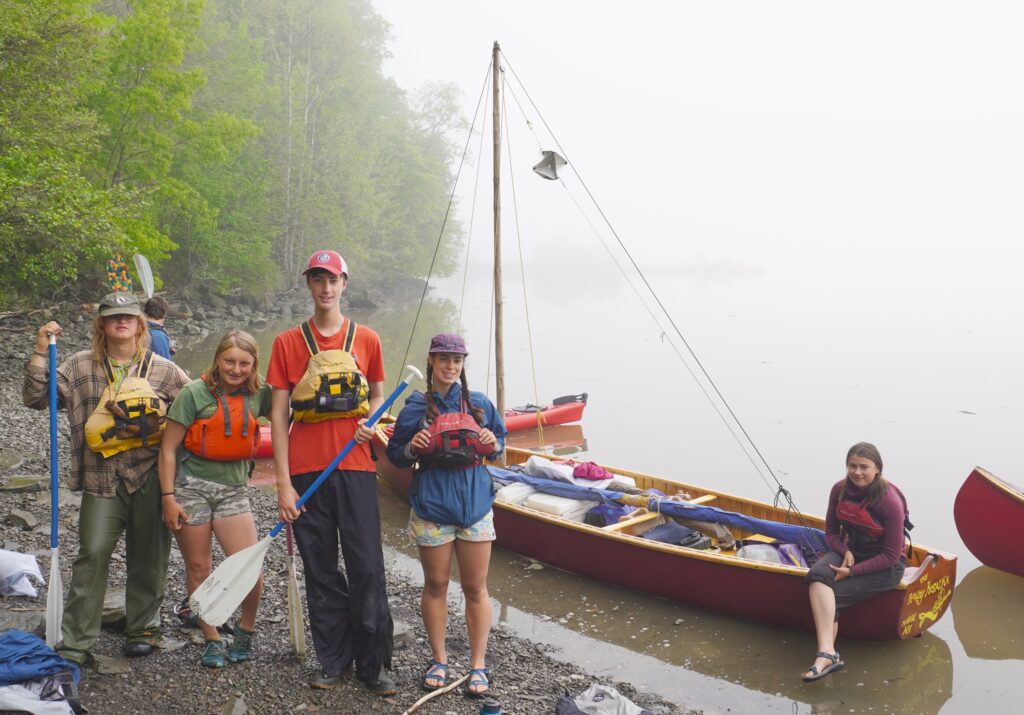
Morning Fog
We crossed under the Tappanzee Bridge just above Dobbs Ferry and the fog cleared so that we could see the skyscrapers of Manhattan way in the distance – so close now to our final destination!
We landed earlier than expected in Dobbs Ferry, and soon met back up with Nathan and Emily. After storing our paddling gear at the waterfront, we walked up a long steep hill through the town to reach the South Presbyterian Church. There, we finally put down our heavy bags and took a good long afternoon nap to get a little more rest – sleeping right under the church pews, filling the aisles, and even napping on the altar.
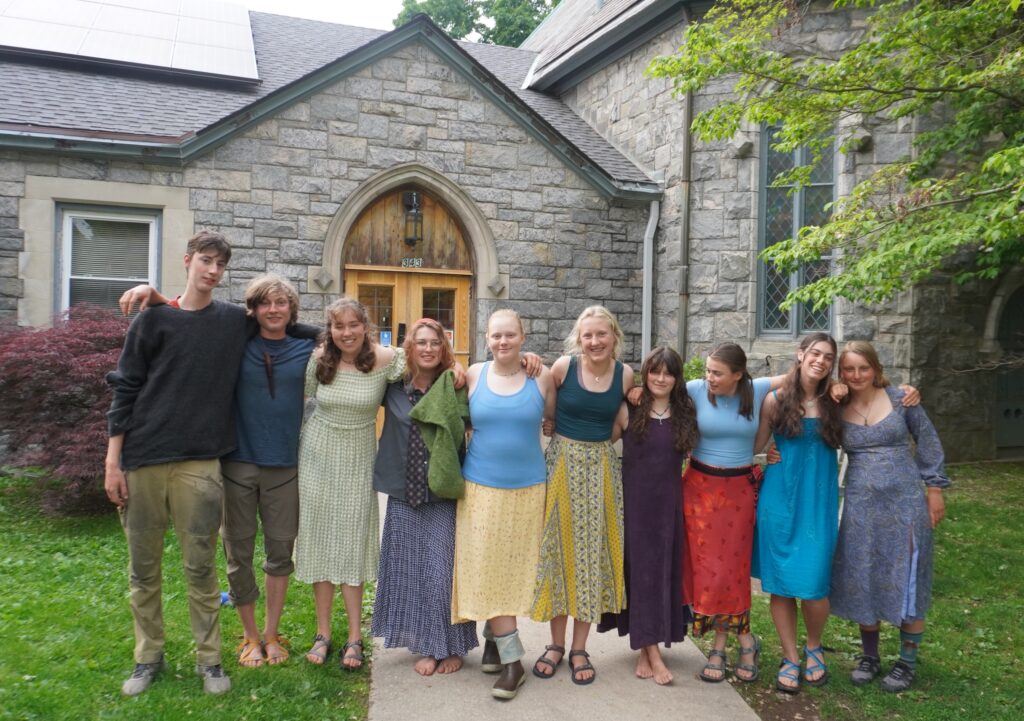
South Presbyterian Church Dobbs Ferry
Later in the evening we met up with two friendly men from the “Midnight Run”, a local non-profit homeless outreach organization, who came to take us into Manhattan for the evening. Their organization brings food and clothing to the homeless in the city. The city lights flashed brightly before us as we entered the city and drove through the busy streets. Each time we arrived at a street corner stop we unloaded food from our van and began to hand it out, while some of us stayed near the van passing out clothing to those who wanted it. We shared stories and much laughter and connection with with the many friendly people whom we met.
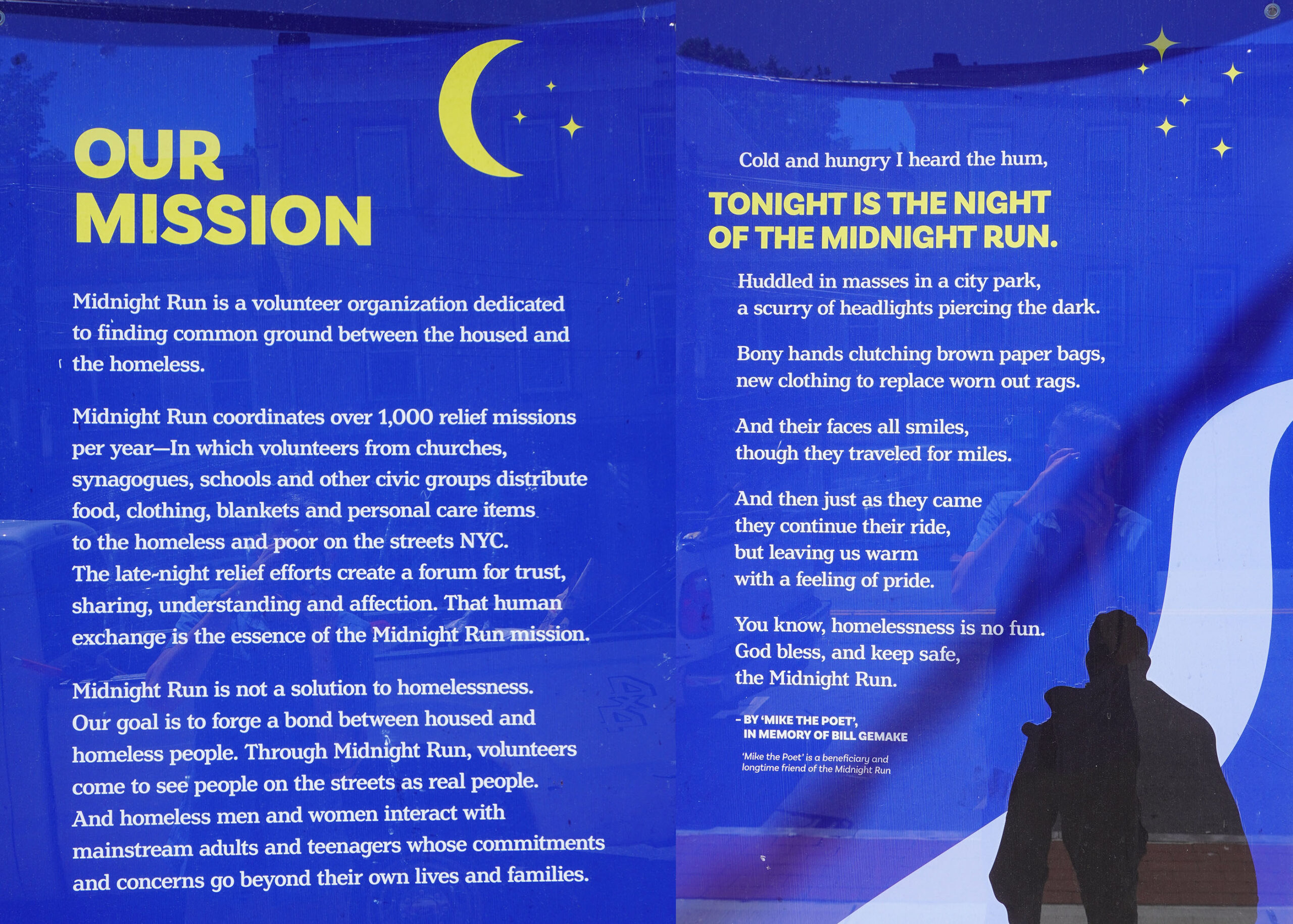
The Midnight Run
TUESDAY, MAY 20
We awoke at 4:30 AM in the clubhouse of the Yonkers Paddling and Rowing Club, which had warmly welcomed us the previous evening with watermelon and pizza! It was still dark and cold outside, though the lights of the George Washington Bridge shone in the distance. As we left Yonkers, the sun began to slowly rise and reflect off of the skyscrapers ahead of us. As the south wind ruffled our hair we happily raised our sails and were pulled swiftly along with the current.
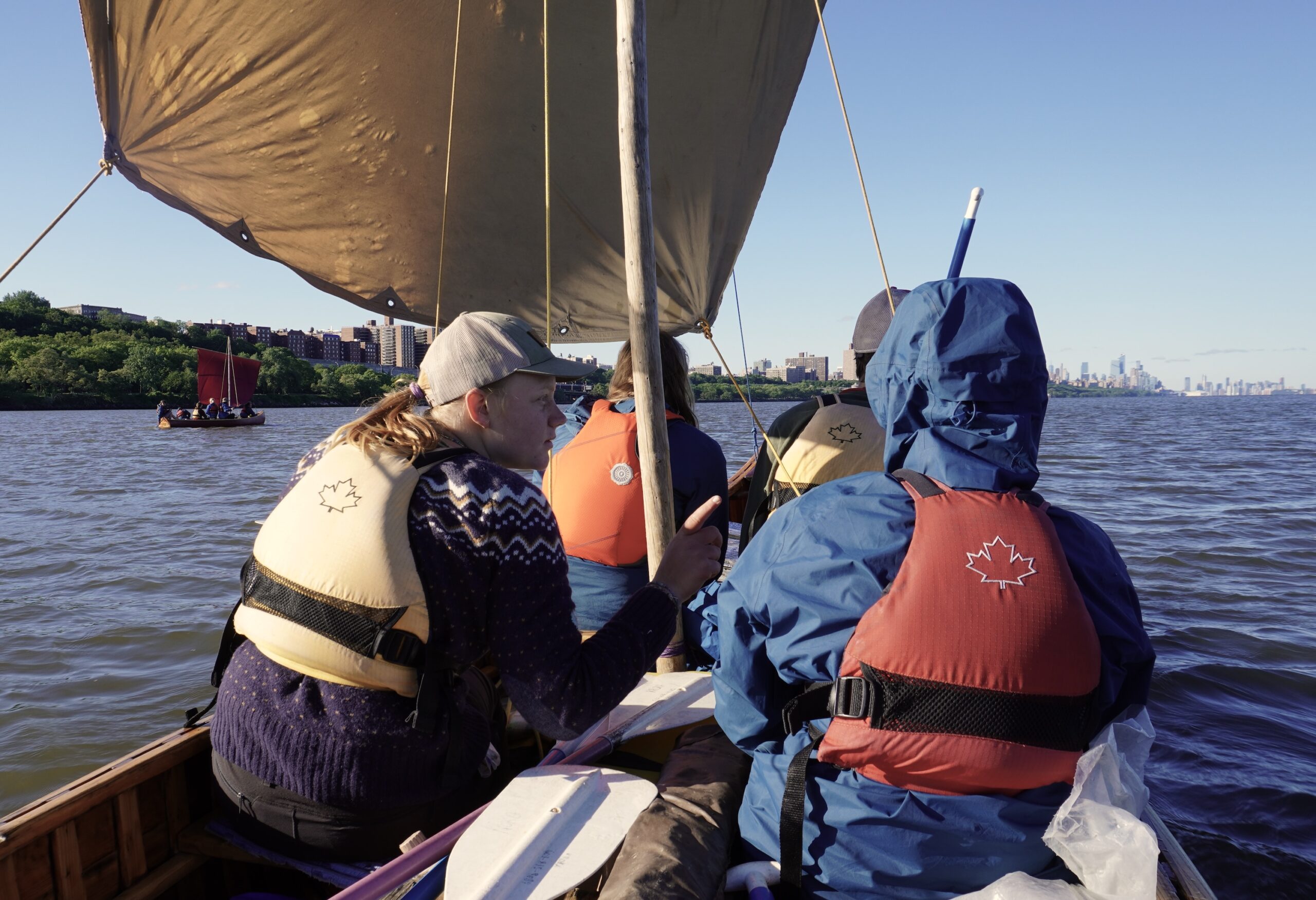
Sailing towards Manhattan
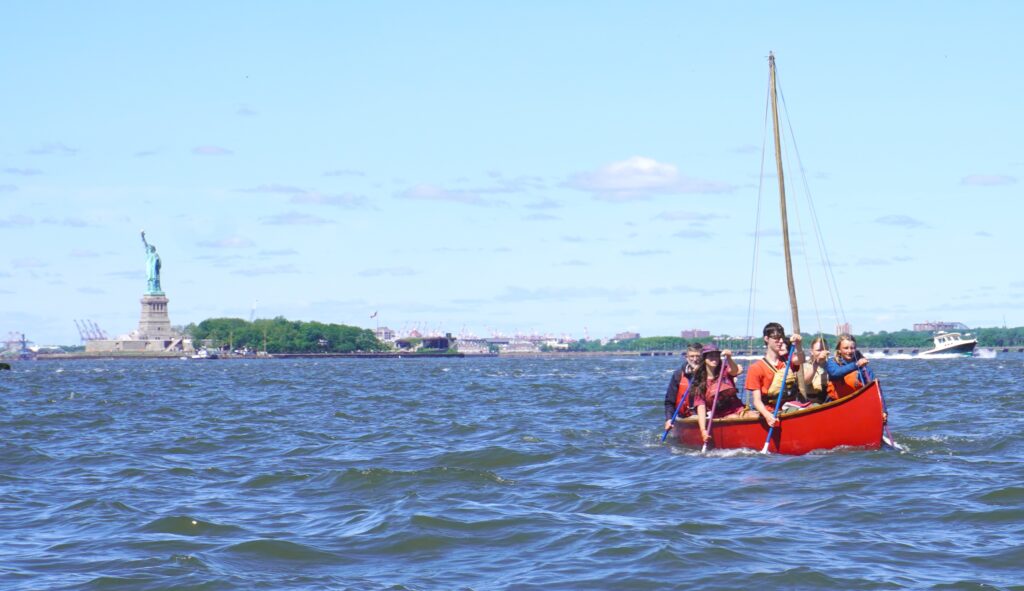
Statue of Liberty
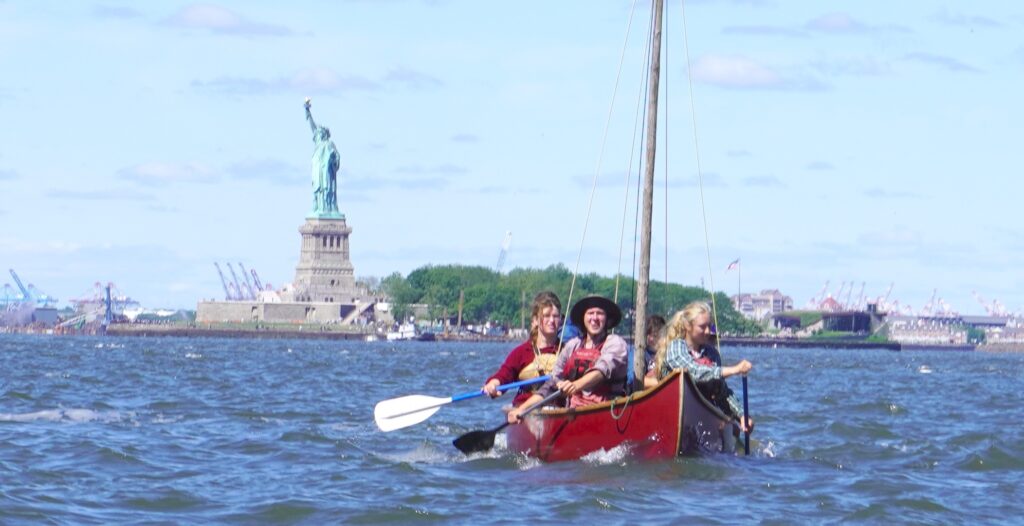
Statue of Liberty

Lower Manhattan
Soon we sailed along the West side of Manhattan — passing Midtown and then the Empire State Building. We stopped for a second breakfast at the Pier 40 kayak club, then zoomed past lower Manhattan. After dodging the Staten Island Ferry, we paused for a photo shoot with the Statue of Liberty as big ships zoomed past us and helicopters clattered by overhead. Soon we were paddling up towards the Gowanus Canal, past many tugboats and rusty barges until we reached the small dock of the Gowanus Dredgers Canoe Club in Brooklyn. While the sun beat down on us, we began to unload our gear and prepare for the next leg of our journey. Finally we have turned the corner to head back north.
Your scribe,
Lucia
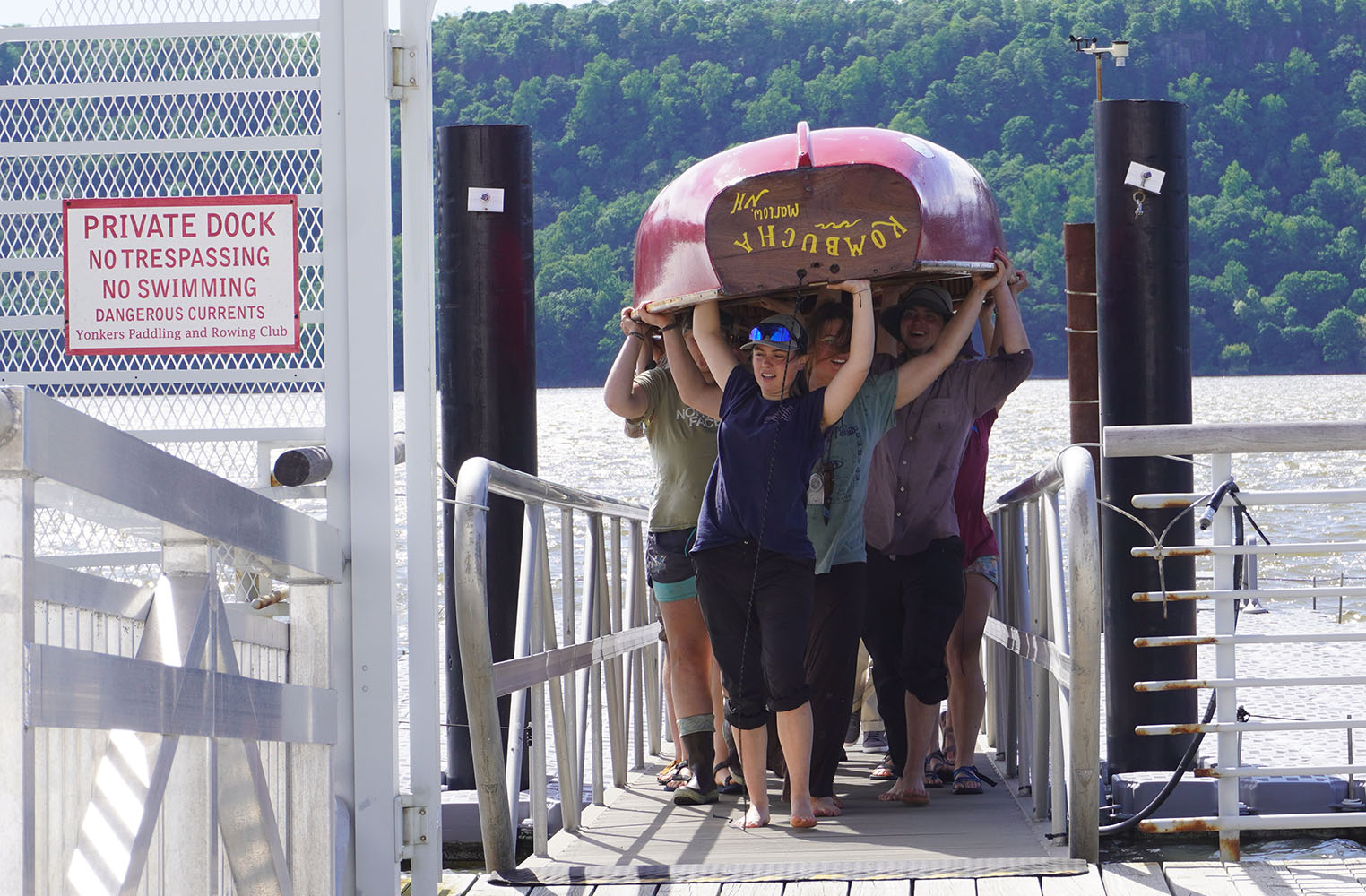
Yonkers Paddling & Rowing Club, Yonkers, NY
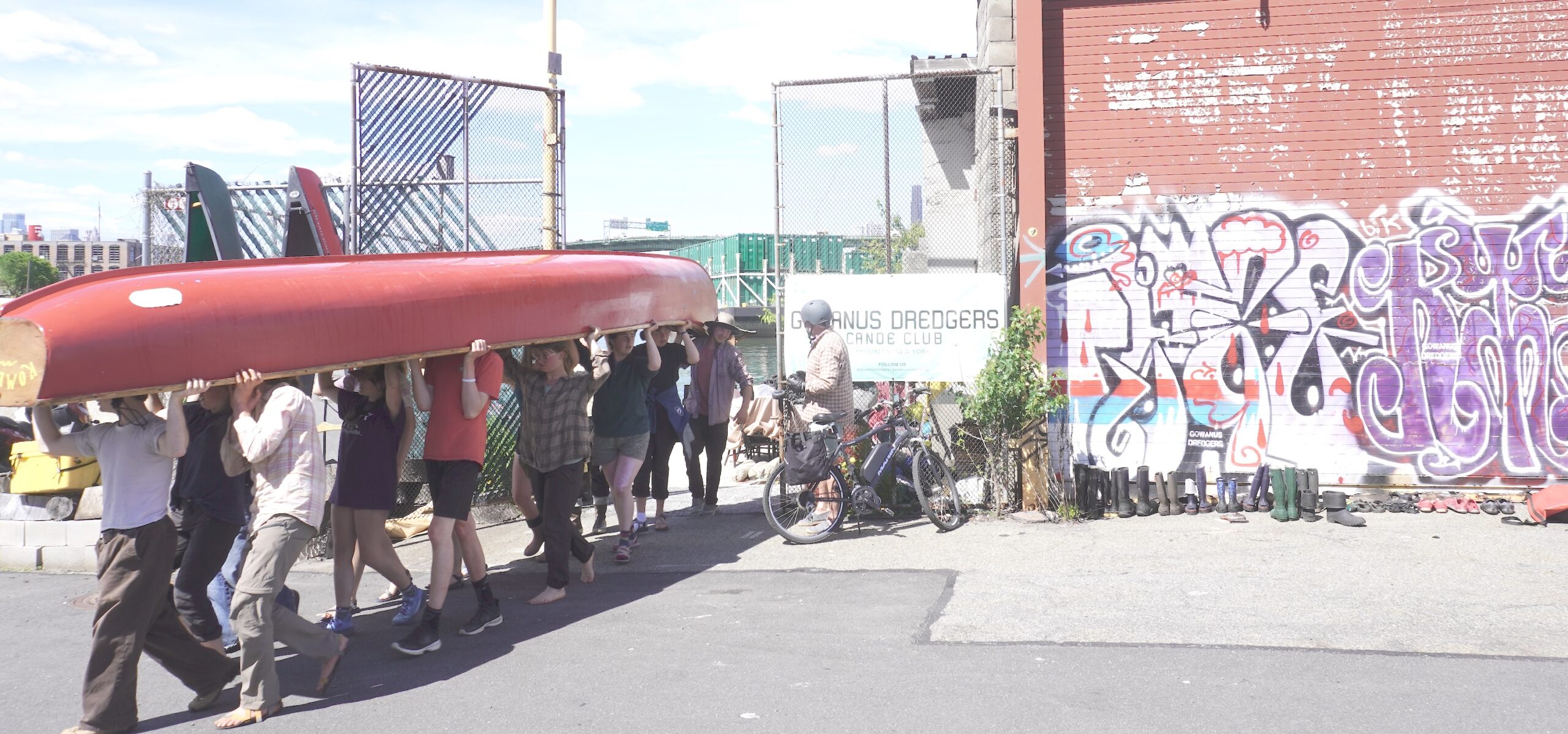
Gowanus Takeout, Brooklyn, NY

